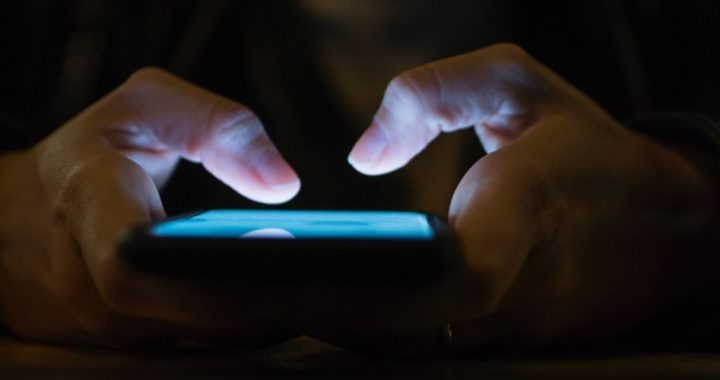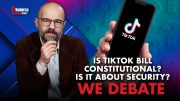
With Twitter taking action to battle the issue of fake follower accounts, famous people — from celebrities to politicians — are seeing millions of “followers” disappear into the digital abyss. Former President Obama has already lost two million “fake followers” in the purge. President Trump has lost 310,000. Singer and actress Katy Perry — who still enjoys the prestige of being the most followed person on Twitter with 107 million followers — saw the loss of three million followers.
Actually, most of those “followers” didn’t really exist in the first place — they were the digital and social media equivalent of imaginary friends. Their deletion by Twitter is merely a reckoning with the truth. And that reckoning has been a long time in coming. Twitter has been aware for years of the trend among famous people of boosting their apparent popularity by buying “fake followers” from companies that specialize in either creating fake accounts out of thin air or hijacking real accounts and using them to follow other accounts.
While the problem has been around for years and social media companies such as Twitter have been aware of it, no real action has been taken to address it. After all, Twitter and other social media platforms have been able to share in the benefits provided by those fake accounts: while Obama and Trump enjoyed an artificial boost of roughly two percent of their actual followers, Twitter has enjoyed the ability to base advertising rates on the total number of users — with scores of millions of those being nothing more than zeros and ones on servers around the globe.
Until very recently, it was simply not in Twitter’s financial interests to delete those accounts.
All of that began to change when reports by media — especially the New York Times — began to expose just how many fake followers there are. When investors and advertisers reacted by demanding that only real human persons who actually use the platform be counted in determining revenues, Twitter initially reacted by suspending — but not deleting — many of those accounts. That meant that while a fake account could not be used to tweet, retweet, like, or follow, those fake accounts were still counted as “followers” for any account they were already following.
How pervasive is the problem? On July 11, the Times reported that Twitter had finally been forced to face the music and begin actually deleting tens of millions of accounts that were either created by bots (computer programs that automate the process of maintaining a Twitter account, including tweets and retweets) or were hijacked by unscrupulous companies and turned over to bots.
As the Times reported:
Twitter’s decision will have an immediate impact: Beginning on Thursday [July 12], many users, including those who have bought fake followers and any others who are followed by suspicious accounts, will see their follower numbers fall. While Twitter declined to provide an exact number of affected users, the company said it would strip tens of millions of questionable accounts from users’ followers. The move would reduce the total combined follower count on Twitter by about 6 percent — a substantial drop.
In a previous report in January, the Times revealed the size and scope of the fake follower problem as well as just how low some fake follower companies will stoop to create fake accounts that appear genuine. For instance, one small company in Florida “sold fake followers and other social media engagement to hundreds of thousands of users around the world, including politicians, models, actors and authors.”
One of those fake accounts was based on the real account of a minor teenage girl. Her real account is pretty much what anyone would expect: the musings of a young girl in the digital age — with tweets ranging from the silly to the introspective. The fake account — using her name, picture, and biographical information — was something else entirely. That account “promoted accounts hawking Canadian real estate investments, cryptocurrency and a radio station in Ghana. The fake Jessica followed or retweeted accounts using Arabic and Indonesian, languages the real Jessica does not speak. While she was a 17-year-old high school senior, her fake counterpart frequently promoted graphic pornography.”
Again, from the Times:
All these accounts belong to customers of an obscure American company named Devumi that has collected millions of dollars in a shadowy global marketplace for social media fraud. Devumi sells Twitter followers and retweets to celebrities, businesses and anyone who wants to appear more popular or exert influence online. Drawing on an estimated stock of at least 3.5 million automated accounts, each sold many times over, the company has provided customers with more than 200 million Twitter followers, a New York Times investigation found.
With lows that low and numbers equaling at least six percent of Twitter’s user base, the problem is immediately apparent.
There were calls within Congress for the Federal Trade Commission to investigate. After all, while most of the fake accounts are created out of whole cloth, a disturbingly large number of them can best be described as a form of identity theft.
But — as is often the best solution — the free market stepped in and applied pressure that led Twitter to address the problem without government intervention. When investors and advertisers began withdrawing support, the financial interests of Twitter shifted and the company was forced to take action.
The effect of that action was as immediately apparent as is the problem: famous Twitter users saw an instant (and substantial) loss in their number of followers. Even Twitter CEO Jack Dorsey felt the purge. He lost 226,354 followers in one fell swoop. The official Twitter account lost 7.7 million followers.
While not all of the people and organizations that have seen huge drops in followers purchased those fake followers (a routine tactic for fake follower accounts is to follow other accounts in the hopes of those accounts following them in return in an effort to appear genuine), many of them did. Politicians lead the pack in purchasing fake followers, so it is not surprising to see Presidents Trump and Obama lose roughly two percent of their followers. It is not likely that Twitter had purchased 7.7 million fake followers or that Dorsey had purchased more than 200,000.
Given Twitter’s reputation for lacking transparency and demonstrating a political agenda, some have questioned the metrics behind the purge. Herman Cain, who ran for president in 2012, lost somewhere around 10,000 followers, prompting him to tweet (to 10,000 fewer people), “And just like that, 10K followers vanish” and “Look, if they’re genuinely fake or dead accounts, I have no problem with it. …But how do we know?”
And that really is the rub. In a social media world that increasingly appears to be built on one falsehood after another, there really is no way to know who is real, who is fake, and to what degree Twitter used this issue to nuke the accounts of people who hold ideas and values different from those of the company.
Photo: bombuscreative/iStock/Getty Images Plus




